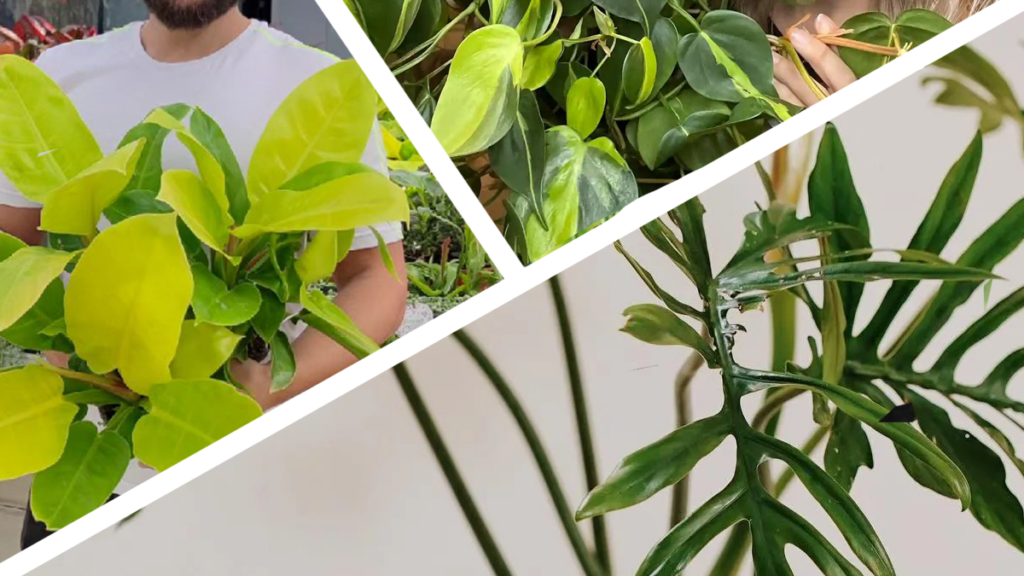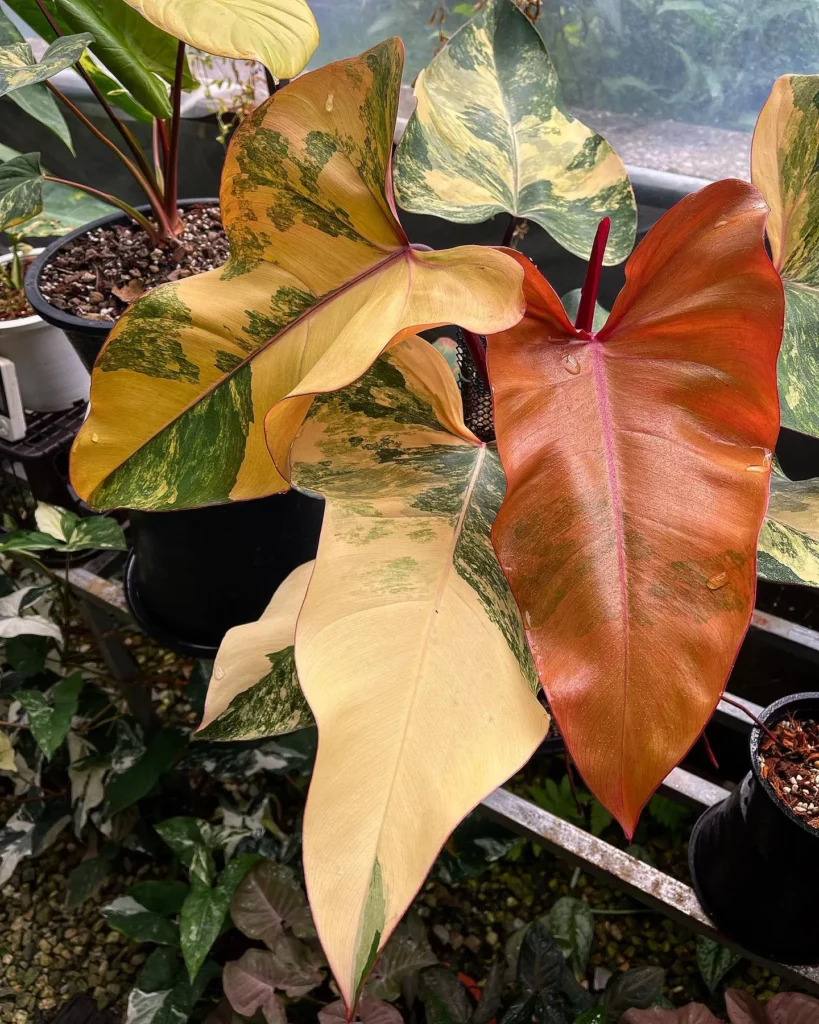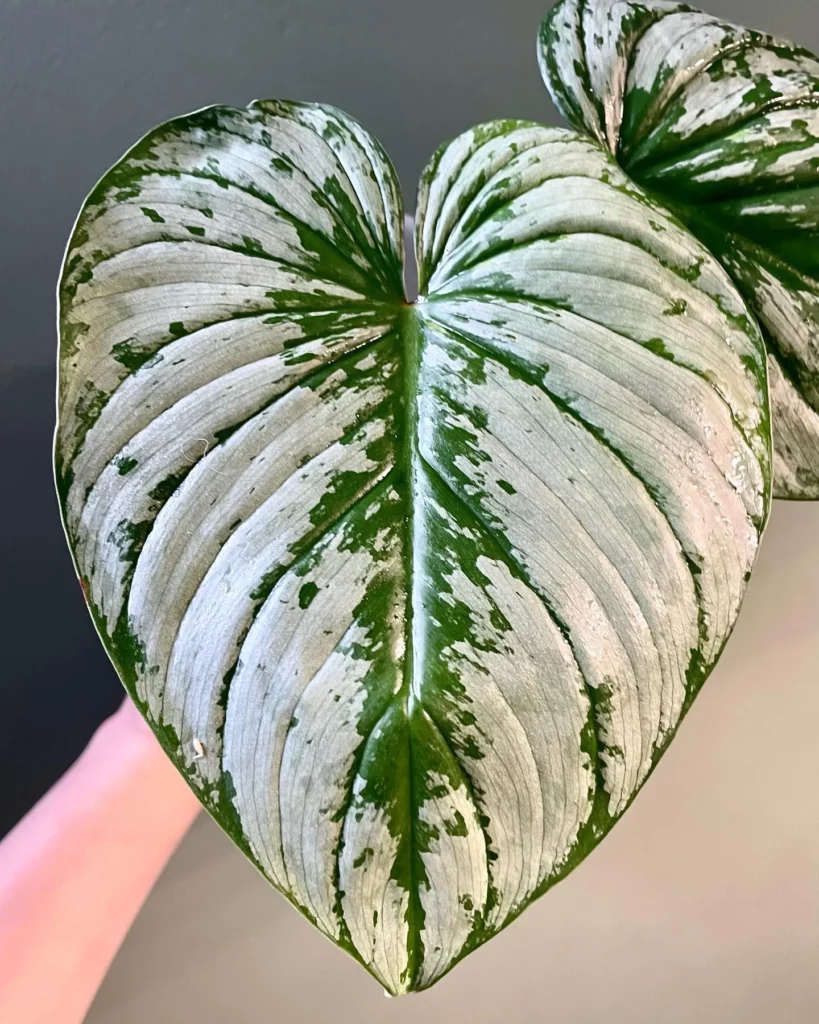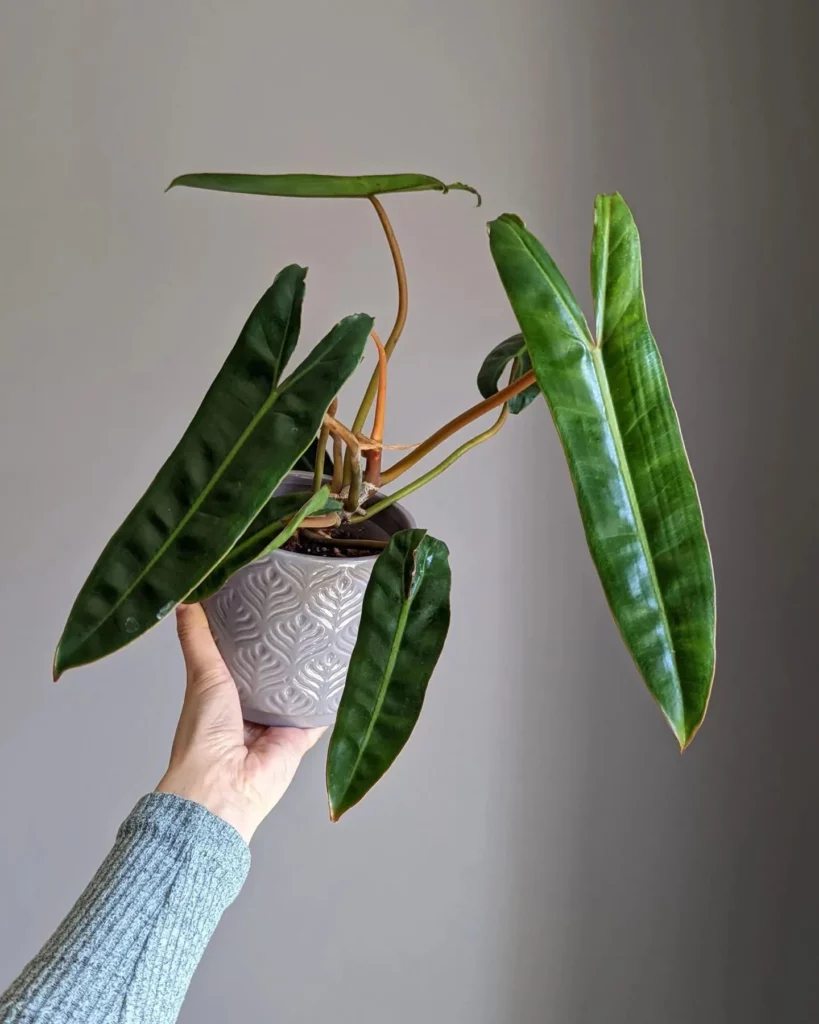The Philodendron Silver Stripe is a stunning plant with distinct characteristics that make it an eye-catching addition to any indoor space. Its heart-shaped leaves are approximately three inches in size, featuring a pointy end for added elegance. The most striking feature of the Silver Stripe is the variegation pattern found in the center of its leaves, which creates a beautiful contrast against the dark green background.
Key Takeaways:
- Proper lighting is essential for the Philodendron Silver Stripe to thrive. Place it in a sunny window with filtered light.
- Fertilize your Philodendron Silver Stripe during the spring and summer months using a balanced houseplant fertilizer. Follow the instructions on the packaging.
- You can propagate your Philodendron Silver Stripe through air layering or stem cuttings. Both methods are effective and relatively easy to do.
- The Philodendron Silver Stripe is toxic if ingested, so keep it out of reach of children and pets.
Appearance of Philodendron Silver Stripe

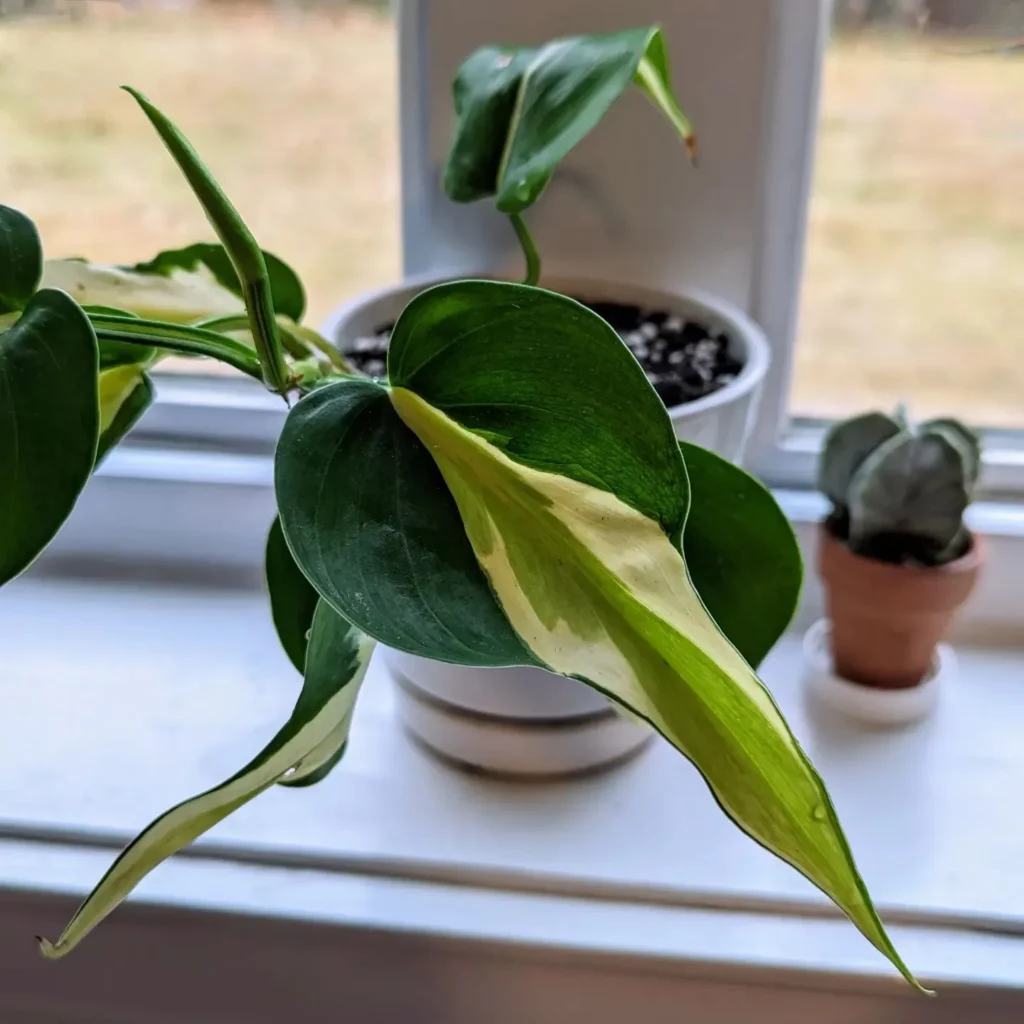

The variegation consists of a combination of creamy yellow and silvery green stripes, with occasional flashes of white. This unique color palette adds a touch of sophistication and visual interest to the plant’s overall appearance. The variegation becomes even more pronounced when the Silver Stripe is placed in higher light conditions, allowing the colors to truly shine.
Whether you’re a seasoned plant enthusiast or a beginner looking to introduce some greenery into your home, the Philodendron Silver Stripe is sure to captivate with its striking appearance and elegant variegation.
Light Requirements for Philodendron Silver Stripe
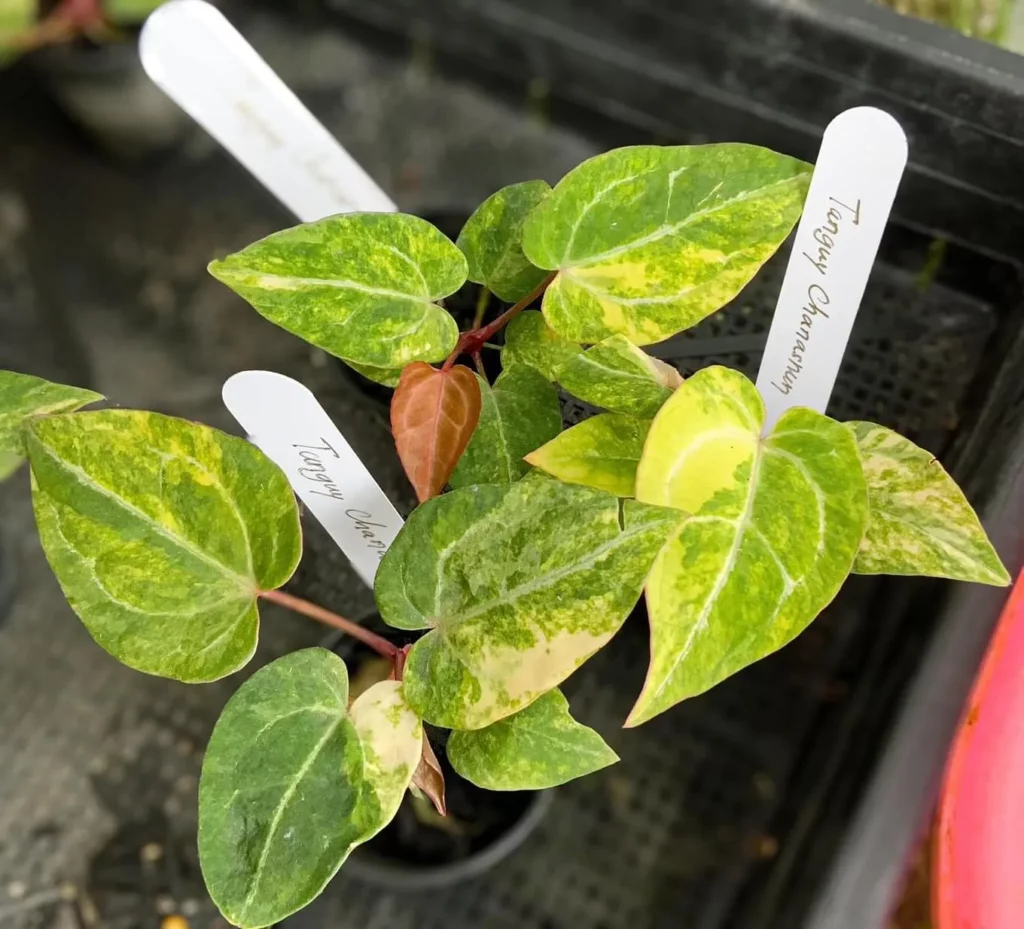
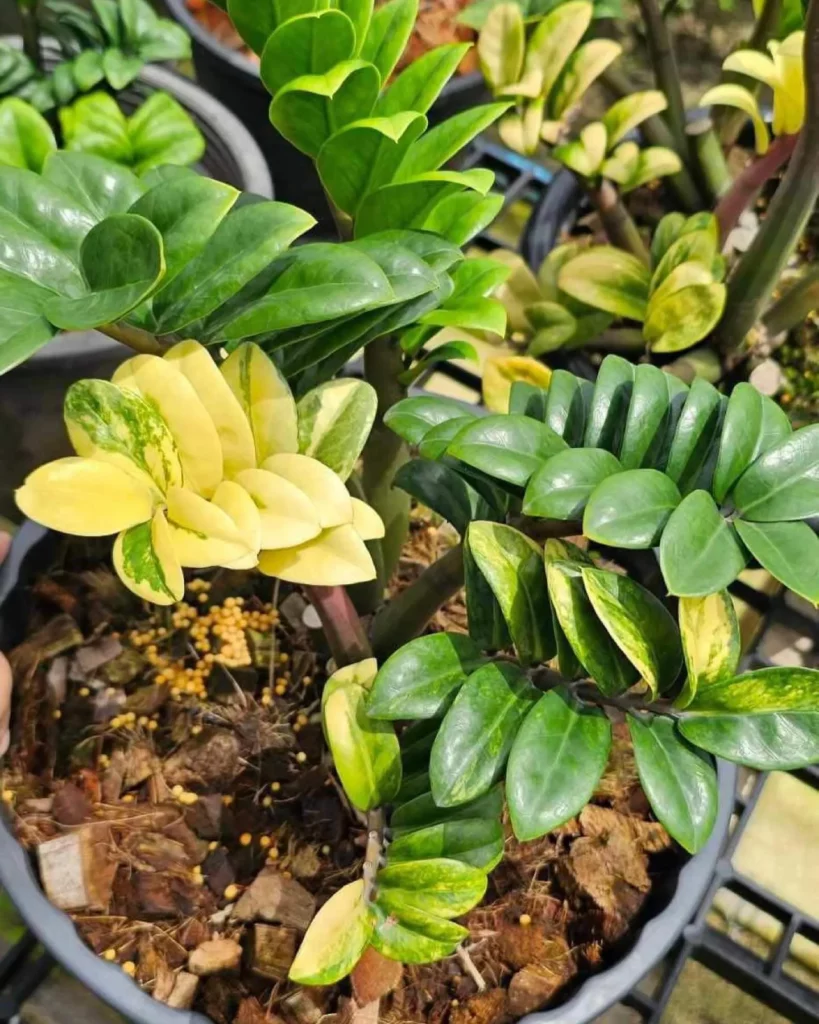

The Philodendron Silver Stripe is a versatile houseplant that can adapt to various light conditions. While it can tolerate low light environments, it truly thrives in bright indirect sunlight. To provide optimal conditions for your Philodendron Silver Stripe, place it in a sunny window that receives filtered light throughout the day. This will ensure that the plant receives the right amount of light it needs to grow and maintain its variegation.
It’s important to note that direct sunlight can be detrimental to the health of the Philodendron Silver Stripe. Exposing the plant to intense, direct sunlight can lead to leaf burn and damage. If you decide to place your plant in a super sunny window or outdoors, it’s crucial to keep a close eye on it and monitor the sun exposure it receives. Consider using a sheer curtain or diffusing the light to protect the leaves from direct sun rays.
Watering Philodendron Silver Stripe

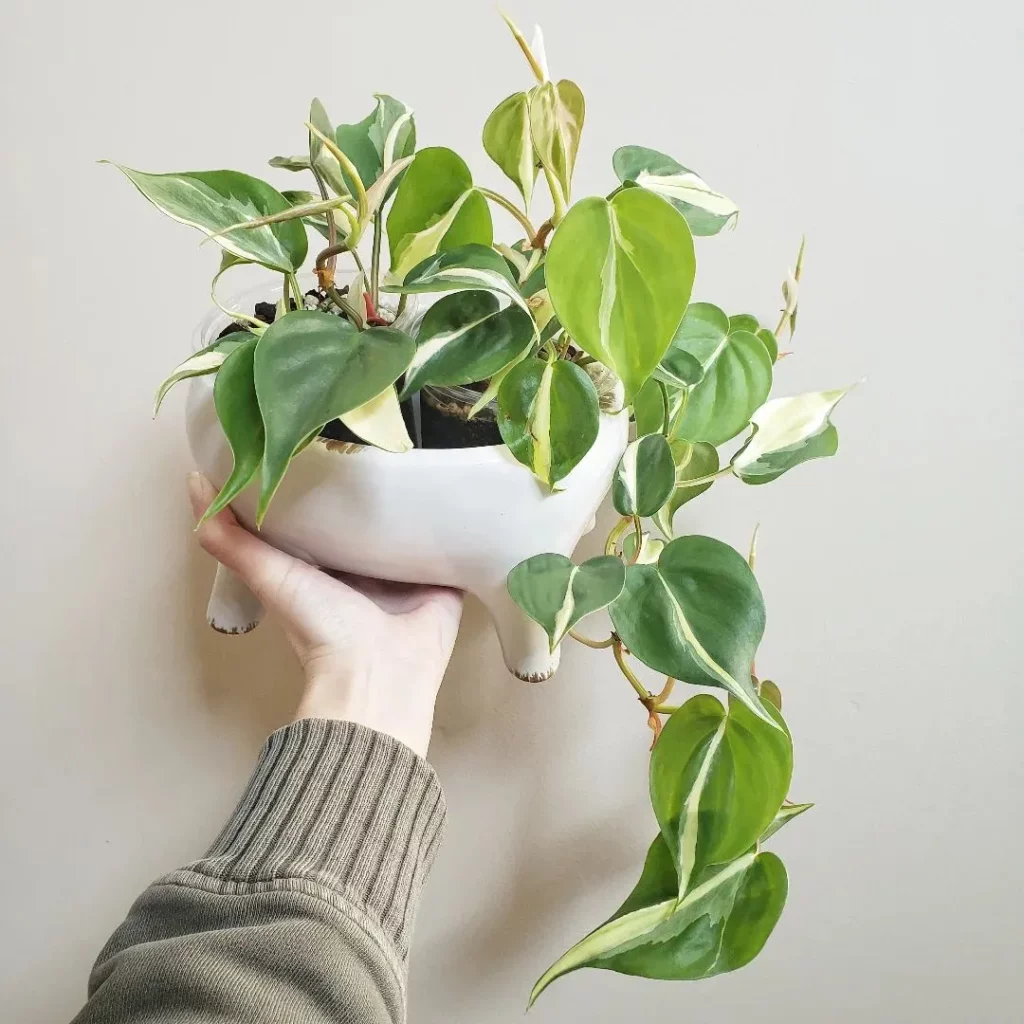
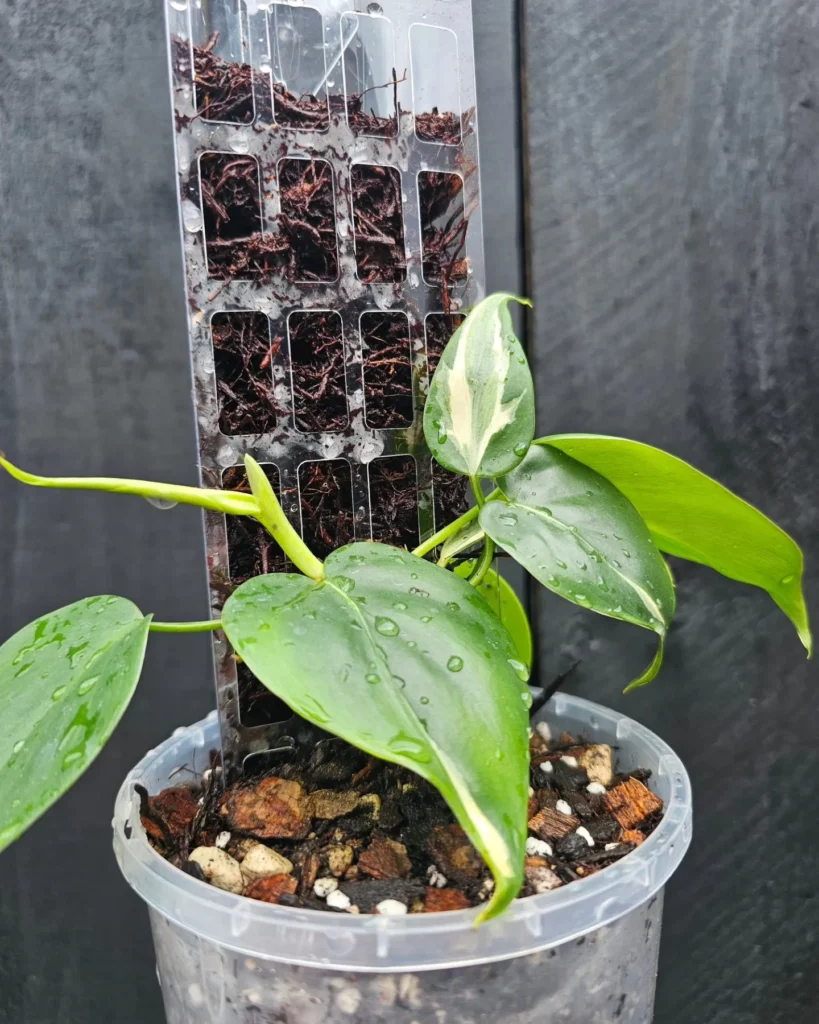
Proper watering is essential for the health of your Philodendron Silver Stripe. Here’s how to water it correctly:
- Thoroughly water the plant, ensuring that the water reaches all parts of the root system.
- Allow the top half of the soil to dry out completely before watering again. This will prevent overwatering and root rot.
- Use a well-draining soil mix to ensure excess water can easily drain away from the roots.
- Choose a pot with a large drainage hole to further facilitate proper water drainage.
- Avoid watering too frequently or allowing standing water to accumulate in the bottom of the pot.
Fertilizing Philodendron Silver Stripe
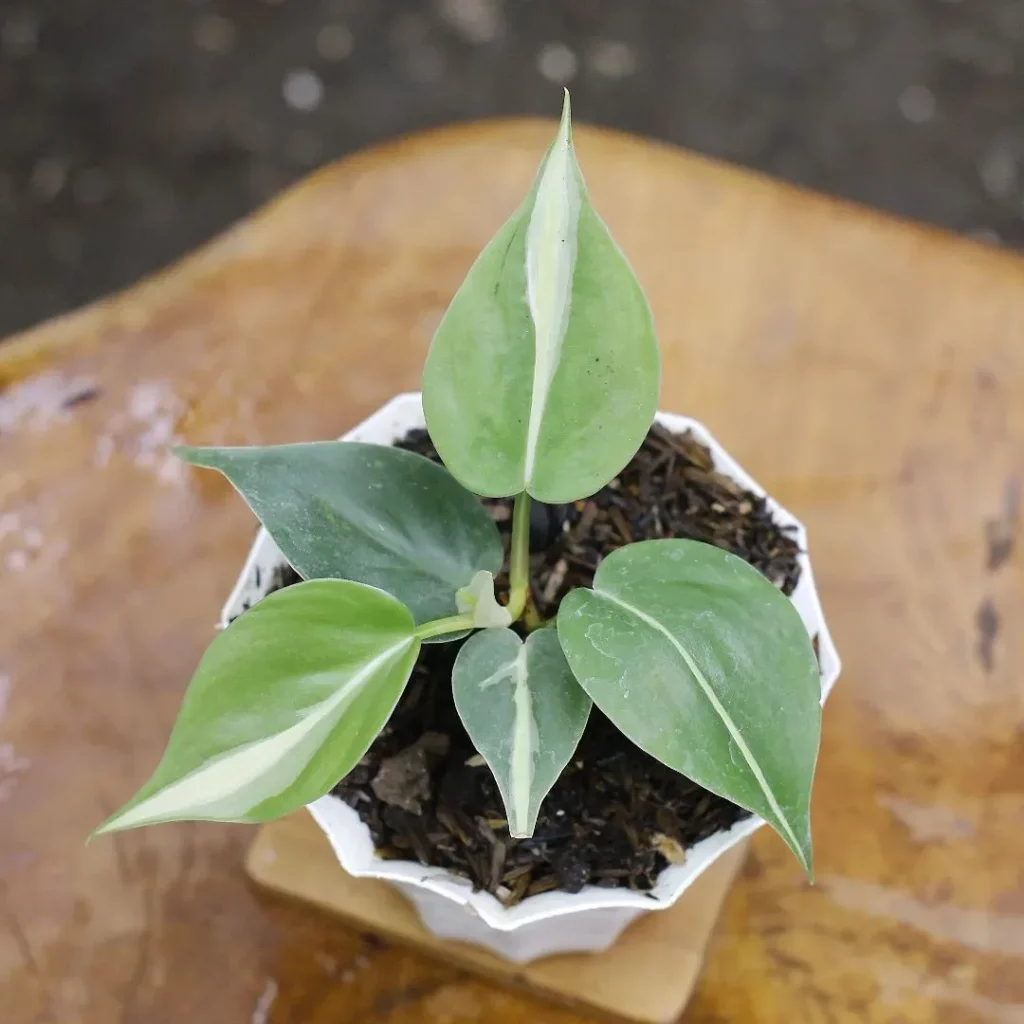
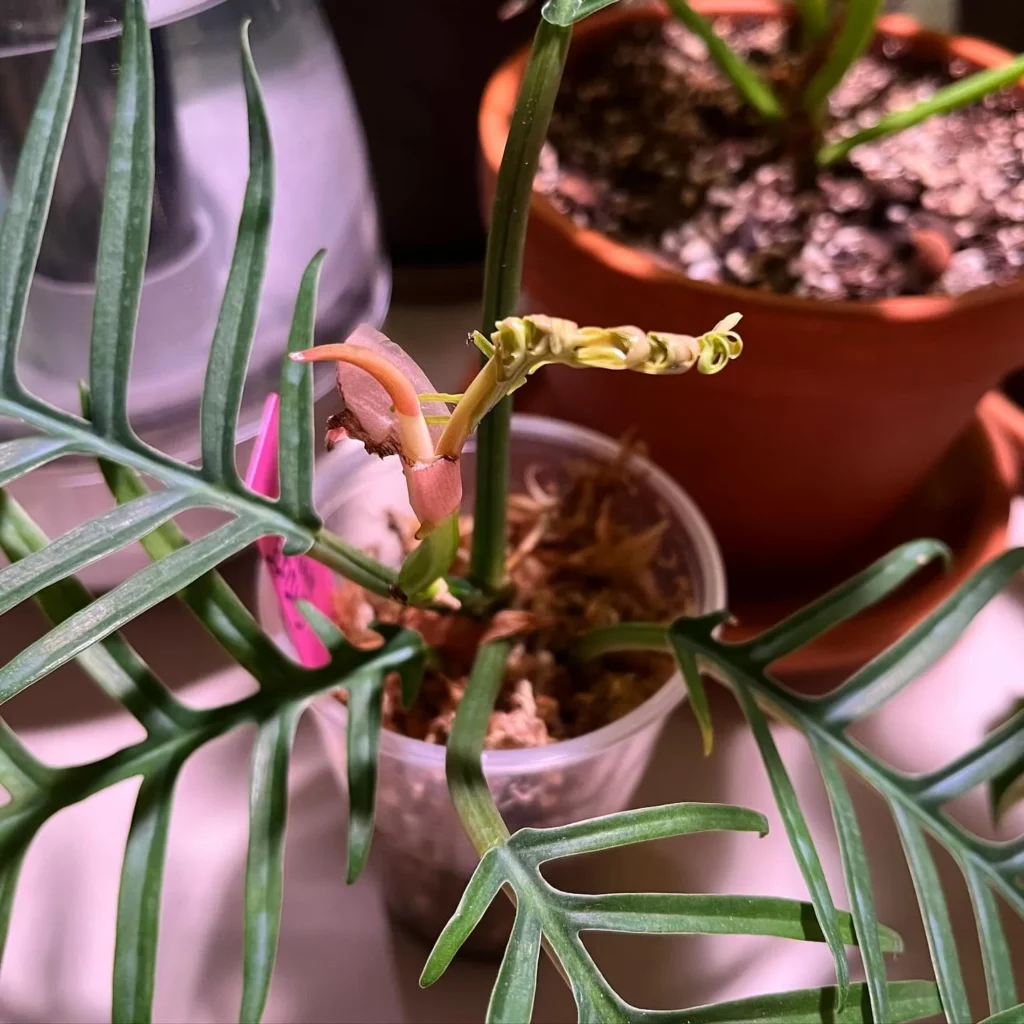
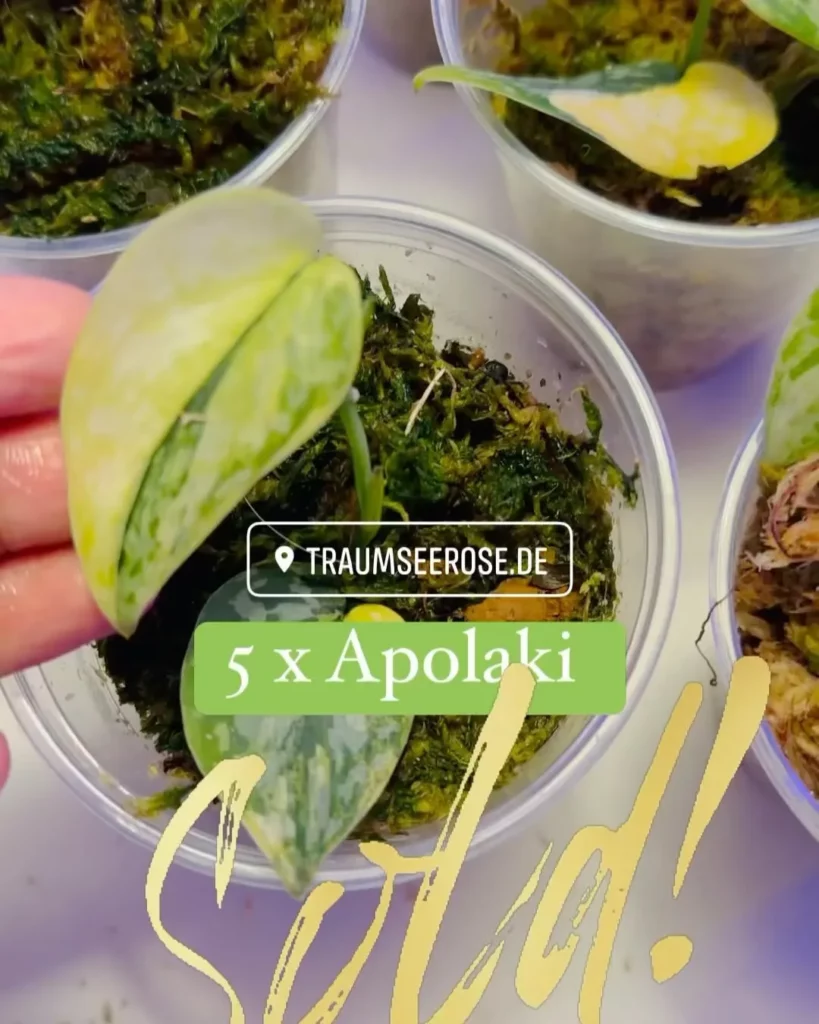
The Philodendron Silver Stripe requires regular fertilization to support healthy growth and vibrant foliage. By providing the right nutrients, you can ensure that your plant thrives and displays its stunning variegation to the fullest.
To fertilize your Philodendron Silver Stripe, use a balanced houseplant fertilizer specifically formulated for foliage plants. This type of fertilizer contains an equal proportion of nitrogen (N), phosphorus (P), and potassium (K). These essential nutrients promote overall plant health and encourage robust growth.
During the spring and summer, when your Philodendron Silver Stripe is actively growing, fertilize it twice or thrice a month. Follow the instructions provided on the fertilizer packaging to determine the proper dosage. It is important not to over-fertilize, as this can lead to nutrient burn and damage to the plant.
You can choose between slow-release fertilizers and liquid fertilizers. Slow-release fertilizers gradually release nutrients over time, providing consistent nourishment to the plant. Liquid fertilizers, on the other hand, are quick-acting and are easily absorbed by the plant roots. Both options can be effective, so choose the one that best fits your gardening preferences.
When fertilizing your Philodendron Silver Stripe, ensure that the nutrients are provided in a consistent amount throughout the growing season. Avoid fertilizing during the winter months, as the plant is in a state of dormancy and does not require as many nutrients.
Potting Philodendron Silver Stripe

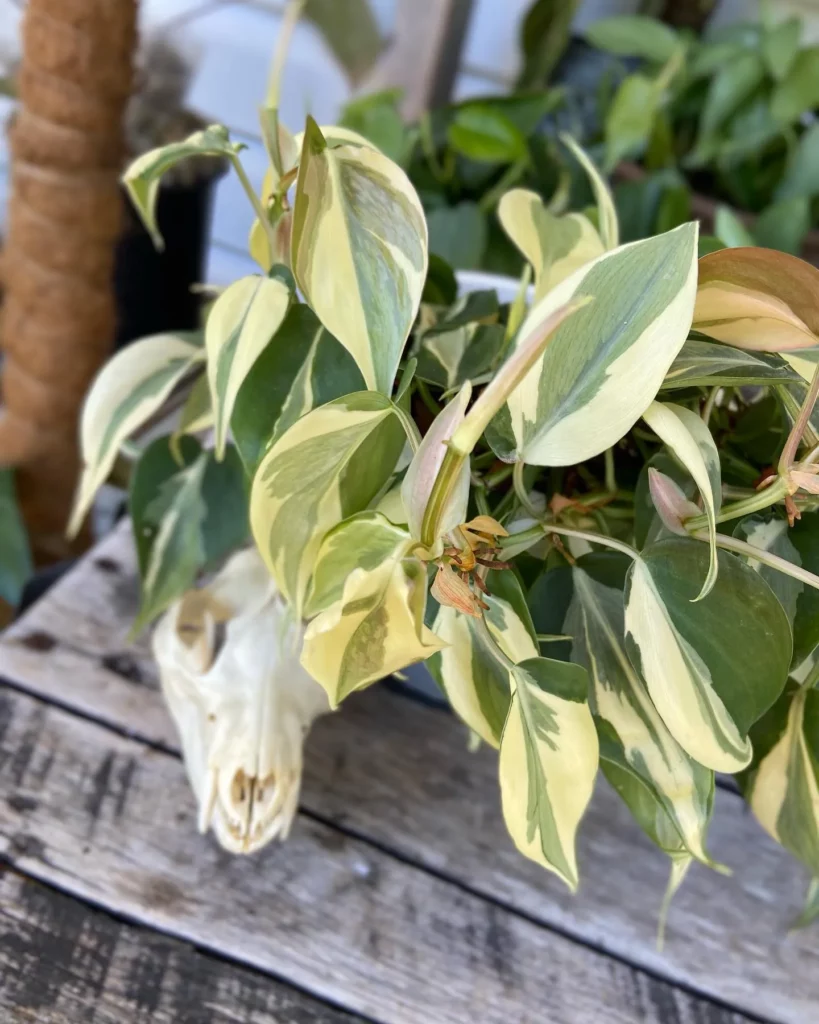

Proper potting is essential for the healthy growth of your Philodendron Silver Stripe. When potting your plant, make sure to use a well-draining soil mix that allows excess water to flow freely. This will help prevent waterlogged roots and potential root rot.
Choose a pot that provides adequate drainage, such as one with drainage holes at the bottom. This will help prevent water from accumulating in the pot and causing moisture-related issues. A pot that is slightly larger than the current one is sufficient when repotting, usually only an inch or so larger in diameter.
It is best to repot your Philodendron Silver Stripe in the spring or summer when the plant is actively growing. This will allow it to quickly adapt to its new pot and minimize the stress on the plant.
Repotting should only be done when the plant becomes root-bound and starts poking its roots out of the drainage holes. This indicates that the plant has outgrown its current pot and needs more space to thrive.
Propagation of Philodendron Silver Stripe
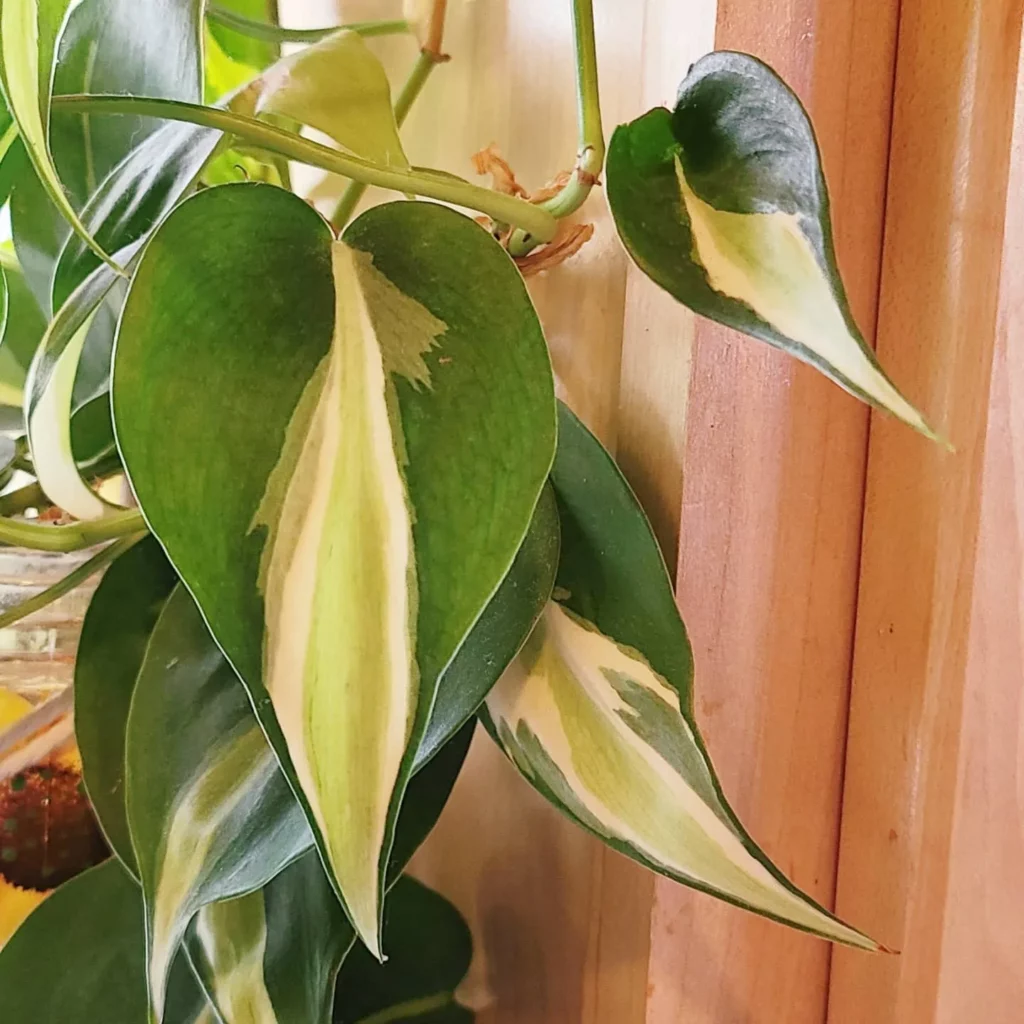
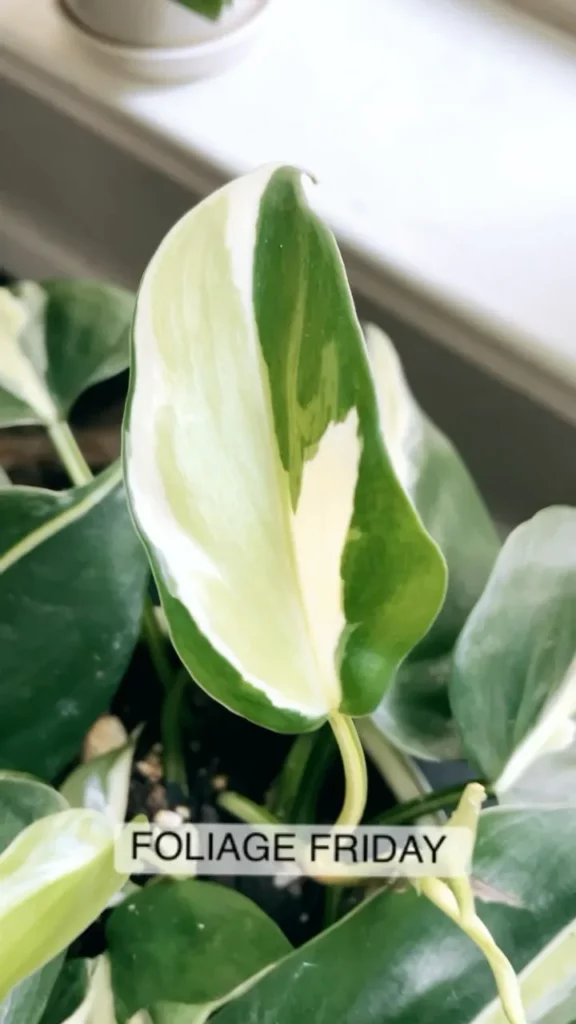

If you want to expand your collection of Philodendron Silver Stripe or share this stunning plant with others, there are two popular methods of propagation: air layering and stem cuttings.
Air Layering
Air layering is an effective method for propagating Philodendron Silver Stripe. To do this, select a healthy stem with a node (the point where leaves attach to the stem). Make a small vertical cut on the stem just below the node and dust the wound with rooting hormone powder.
Next, prepare a handful of moist peat moss and wrap it around the wounded area. Secure the moss in place by wrapping plastic wrap tightly around it. This creates a moist environment for root development.
Over time, roots will form at the wound site. Once you see well-developed roots, carefully cut the rooted stem just below the plastic wrap and plant it in a pot with fresh, well-draining soil. Keep the soil consistently moist and place the pot in a warm, bright location where the new plant can thrive.
Stem Cuttings
Stem cuttings are a simple and straightforward way to propagate Philodendron Silver Stripe. Begin by selecting a healthy stem with at least two nodes. Using a clean, sharp knife or pruning shears, cut the stem just below a node.
Remove any leaves from the lower half of the cutting to reduce moisture loss. Dip the cut end of the stem in rooting hormone powder to encourage root development.
Next, you have two options for rooting the cutting: water propagation or using a rooting medium. For water propagation, place the cutting in a glass or jar filled with water, ensuring that at least one node is submerged. Replace the water every few days to keep it fresh.
If you choose to use a rooting medium, such as a mixture of damp sphagnum moss and perlite, insert the cutting into the medium, burying at least one node below the surface. Keep the rooting medium consistently moist, but not soggy, as excess moisture can lead to rot.
Growth and Development of Philodendron Silver Stripe
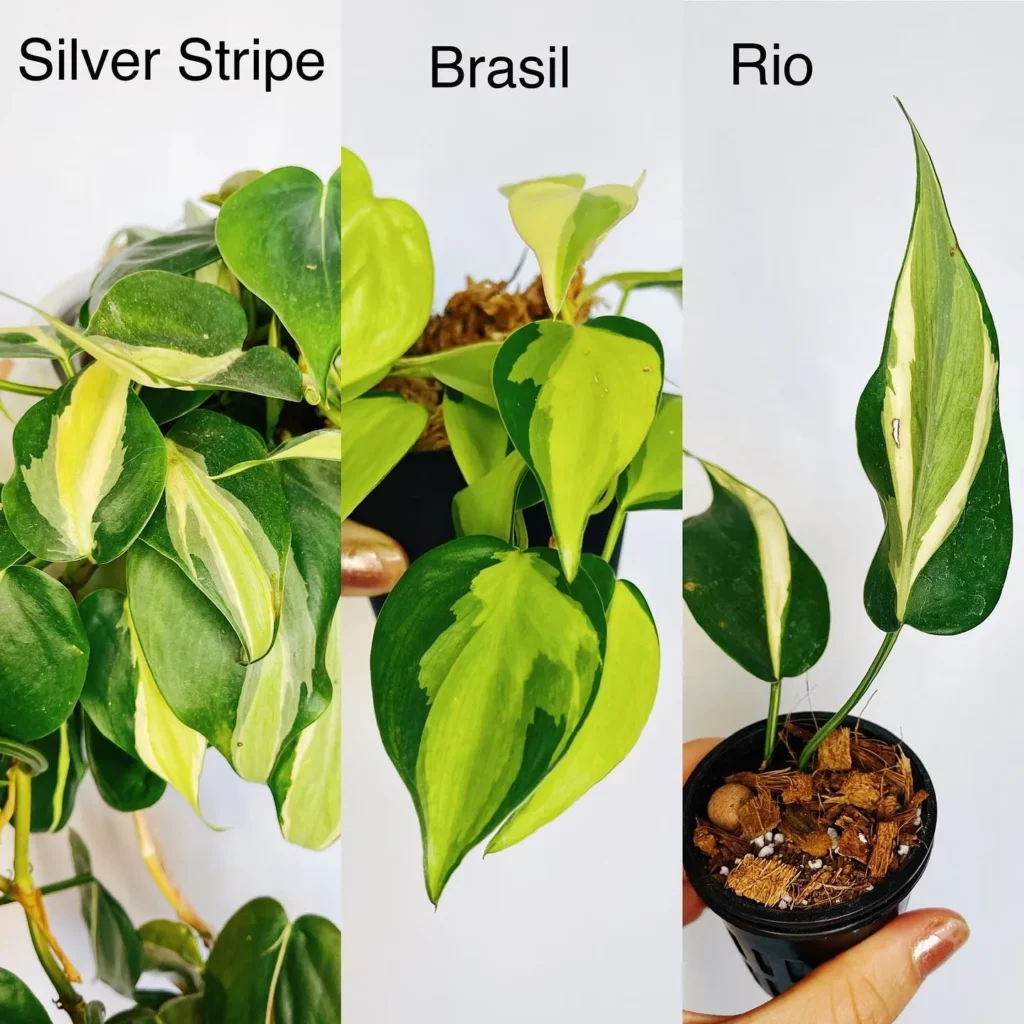
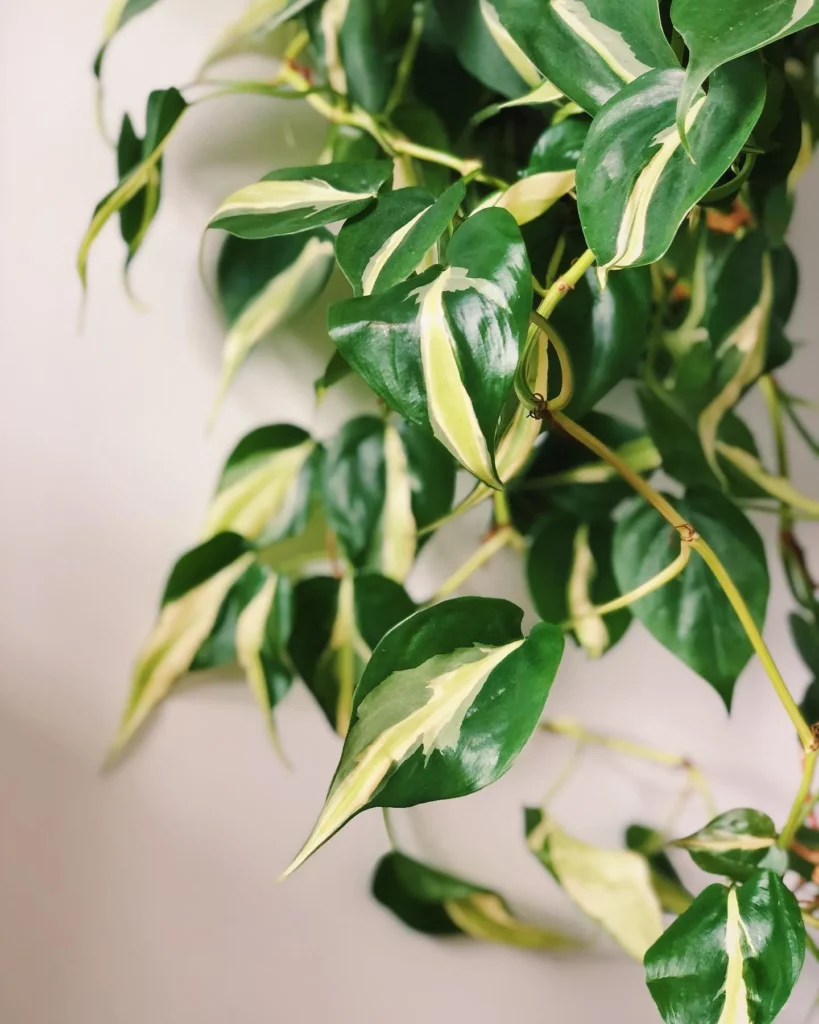
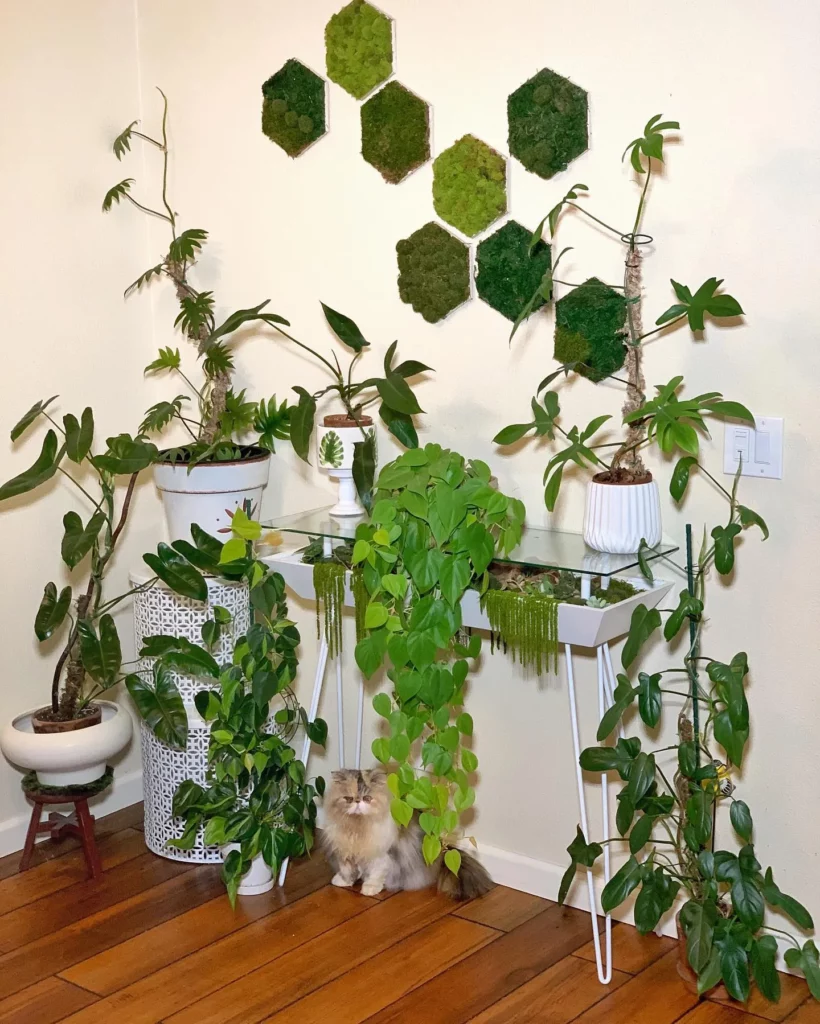
The Philodendron Silver Stripe is known for its vigorous growth, thriving under ideal conditions. Although it may grow slightly slower than the all-green Philodendron hederaceum, it still exhibits a relatively fast growth rate. Pruning the plant can help promote fullness and encourage healthy new growth.
When it comes to repotting, it is important to wait until the plant becomes root-bound before considering a larger pot. Repotting too frequently can disrupt the plant’s growth and development.
The Philodendron Silver Stripe prefers temperatures between 70 to 80 degrees Fahrenheit, which are commonly found in most households. It also tolerates normal household humidity levels, making it a versatile and adaptable houseplant.
Pests and Diseases of Philodendron Silver Stripe
The Philodendron Silver Stripe is a resilient plant that generally resists pests. However, it can still fall prey to common houseplant pests, such as spider mites and aphids. Regularly inspecting your Philodendron Silver Stripe for signs of these pests is important to keep your plant healthy and thriving.
Spider mites are tiny pests that can infest your plant, causing visible damage. Look for fine webbing on the leaves and tiny specks that move around when disturbed. If you spot spider mites, isolate your plant to prevent the infestation from spreading to other plants and apply an insecticidal soap or horticultural oil to control the pests.
Aphids are another common pest that can affect your Philodendron Silver Stripe. These small, soft-bodied insects usually cluster on the undersides of leaves, where they feed on plant sap. Signs of aphids include curling leaves, yellowing foliage, and a sticky residue called honeydew. To eliminate aphids, wipe them off with a damp cloth or spray them with a gentle insecticidal soap solution.
In addition to pests, Philodendron Silver Stripe can also suffer from diseases. Overwatering or improper care can lead to root rot, a fungal disease that affects the roots and causes them to decay. To prevent root rot, make sure to provide your plant with proper drainage and allow the soil to dry out slightly between waterings. If root rot develops, remove the affected parts of the plant, repot it in fresh, well-draining soil, and adjust your watering practices.
Toxicity of Philodendron Silver Stripe
The Philodendron Silver Stripe, like other Philodendron plants, is toxic if ingested by humans or pets. It contains toxic insoluble calcium oxalate crystals, which can cause oral irritation, swelling of the mouth, drooling, vomiting, and difficulty swallowing. It is important to keep the plant out of reach of children and pets.
Pruning Philodendron Silver Stripe
Pruning your Philodendron Silver Stripe is an important step to promote fullness and encourage healthy new growth. By trimming leggy stems, you can help your plant develop a bushier growth habit, resulting in a more attractive appearance.
In addition to promoting overall fullness, removing damaged, discolored, or diseased leaves is crucial for maintaining the health of your Philodendron Silver Stripe. This ensures that the plant’s resources are focused on producing vibrant and robust foliage.
When pruning, it’s essential to use sterilized scissors or pruning shears to prevent the spread of any potential diseases or infections. Make clean cuts just above a leaf node or bud to promote new growth from that point.
Pruning also provides an excellent opportunity for propagation. The tip cuttings that you remove can be easily propagated, allowing you to expand your collection or share the joy of growing Philodendron Silver Stripe with others.
Encouraging Fullness in Philodendron Silver Stripe
If you want your Philodendron Silver Stripe to have a fuller and bushier appearance, there are a few additional steps you can take along with regular care and pruning. One effective method is to provide support for the plant to climb and cling onto.
You can use bamboo canes or moss poles as staking options. Simply place the stakes near the base of the plant and gently guide the stems towards them as the plant grows. The Silver Stripe will naturally attach itself to the stakes, allowing it to climb and develop larger leaves. This will contribute to a more lush and vigorous growth habit.
Staking not only adds support but also encourages the Philodendron Silver Stripe to grow upwards instead of sprawling. As the plant grows taller, it will produce more foliage along the stems, creating a fuller and more compact appearance. Remember to position the stakes strategically to maintain balance and symmetry as the plant grows.
FAQ
What is the Philodendron Silver Stripe?
The Philodendron Silver Stripe is a variegated variety of the Philodendron hederaceum plant. It is similar to the Philodendron Brasil in terms of leaf size, shape, and growth pattern. However, the Silver Stripe has more variegation in size, shape, and color range. It has a yellow-green variegation bordered by a grayish-silver stripe before the leaf turns dark green. The Silver Stripe is different from the Cream Splash variety, which has more cream variegation, and the Rio variety, which has silver variegation in the center.
What does the Philodendron Silver Stripe look like?
The Philodendron Silver Stripe has heart-shaped leaves that are approximately three inches in size. The leaves have a pointy end and are elegantly striped in the center with a combination of creamy yellow, silvery green, and occasional flashes of white on a background of dark green. The variegation is more pronounced in higher light conditions.
What are the light requirements for the Philodendron Silver Stripe?
The Philodendron Silver Stripe can tolerate low light conditions, but it thrives in bright indirect sunlight. It should be placed in a sunny window that receives filtered light. Direct sunlight can burn the leaves, so it is important to monitor the plant if it is placed in a super sunny window or outdoors.
How should I water the Philodendron Silver Stripe?
The Philodendron Silver Stripe should be watered thoroughly, allowing the top half of the soil to dry out completely before watering again. It is important to use a well-draining soil mix and a pot with a large drainage hole to prevent water from being retained in the soil. Overwatering can lead to root rot, so it is important to avoid watering too frequently or having standing water in the bottom of the pot.
How often should I fertilize the Philodendron Silver Stripe?
The Philodendron Silver Stripe should be fertilized twice or thrice during the spring and summer using a balanced houseplant fertilizer. It is important to follow the instructions on the fertilizer packaging and avoid fertilizing during the winter months. Slow-release fertilizers or liquid fertilizers can be used, as long as the nutrients are provided in a consistent amount throughout the growing season.
What kind of pot and soil should I use for the Philodendron Silver Stripe?
The Philodendron Silver Stripe should be potted in a well-draining soil mix and a pot that allows for proper drainage. The pot should be sized up only an inch or so when repotting, and it is best to repot in the spring or summer. Repotting should only be done when the plant becomes root-bound and starts poking its roots out of the drainage holes.
How can I propagate the Philodendron Silver Stripe?
The Philodendron Silver Stripe can be propagated through air layering or stem cuttings. Air layering involves placing peat moss around a node and wrapping it with plastic until roots form. The rooted stem can then be cut and planted in a pot with fresh soil. Stem cuttings can be rooted in water or a mixture of damp sphagnum moss and perlite before being transplanted to a pot with well-draining soil.
How does the Philodendron Silver Stripe grow and develop?
The Philodendron Silver Stripe is generally a fast grower in ideal conditions. However, as a variegated variety, it may grow slightly slower than the all-green Philodendron hederaceum. Pruning can encourage fullness and healthy new growth, while repotting should only be done when the plant becomes root-bound. The plant thrives in temperatures between 70 to 80 degrees Fahrenheit and tolerates normal household humidity levels.
What pests and diseases should I watch out for with the Philodendron Silver Stripe?
The Philodendron Silver Stripe is generally a pest-resistant plant. However, it can be susceptible to common houseplant pests such as spider mites and aphids. Regularly inspect the plant for signs of pests and treat them accordingly. Overwatering or improper care can lead to root rot or fungal diseases, so it is important to provide the plant with optimal conditions and avoid excess moisture.
Is the Philodendron Silver Stripe toxic?
Yes, the Philodendron Silver Stripe, like other Philodendron plants, is toxic if ingested by humans or pets. It contains toxic insoluble calcium oxalate crystals, which can cause oral irritation, swelling of the mouth, drooling, vomiting, and difficulty swallowing. It is important to keep the plant out of reach of children and pets.
How should I prune the Philodendron Silver Stripe?
Pruning the Philodendron Silver Stripe can help promote fullness and healthy new growth. Trim leggy stems to encourage a bushier growth habit, and remove damaged, discolored, or diseased leaves. Cutting can be done using sterilized scissors, and the tip cuttings can be easily propagated.
How can I encourage fullness in the Philodendron Silver Stripe?
In addition to proper care and pruning, staking the Philodendron Silver Stripe can help encourage fullness and a bushier growth habit. Bamboo canes or moss poles can be used to provide support for the plant to climb and cling onto. This will help promote larger leaves and a more lush appearance.

